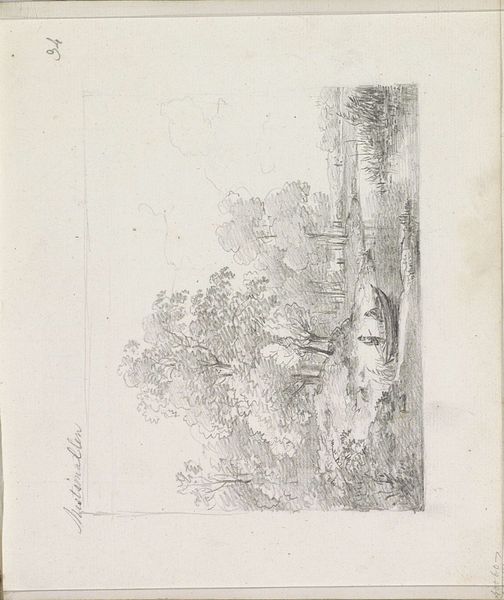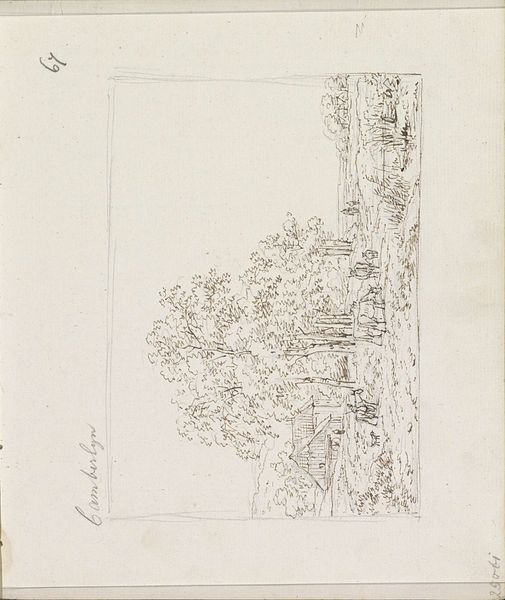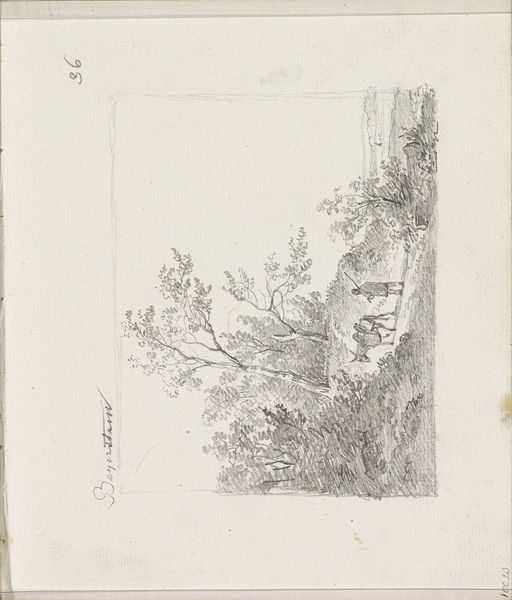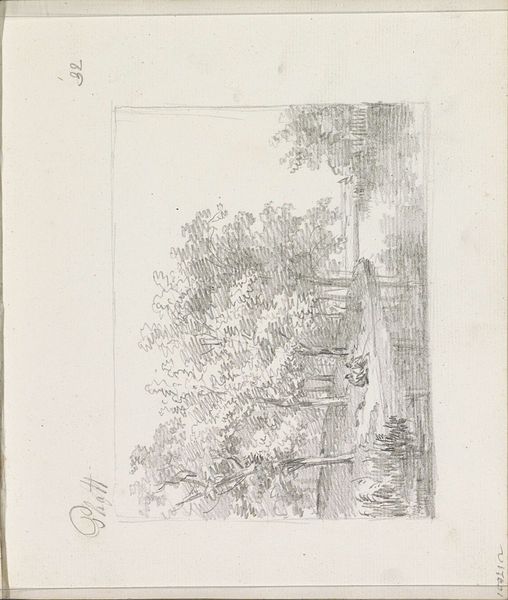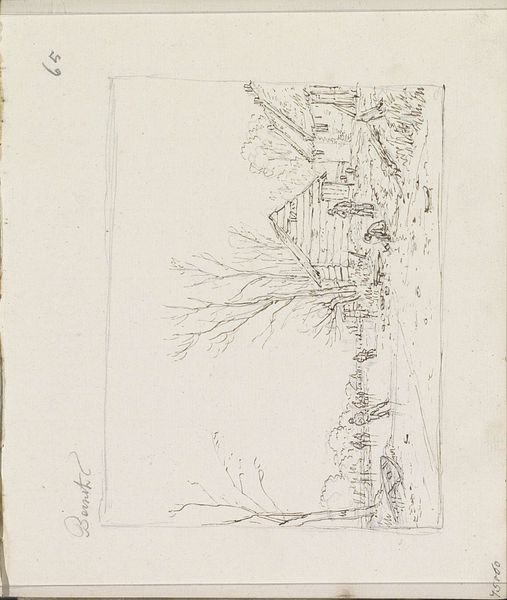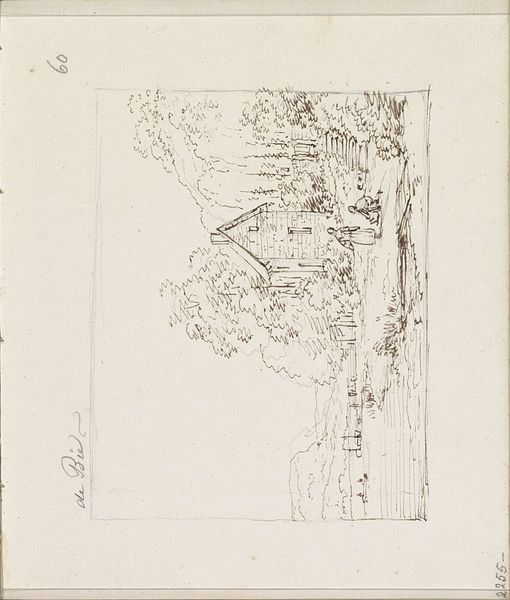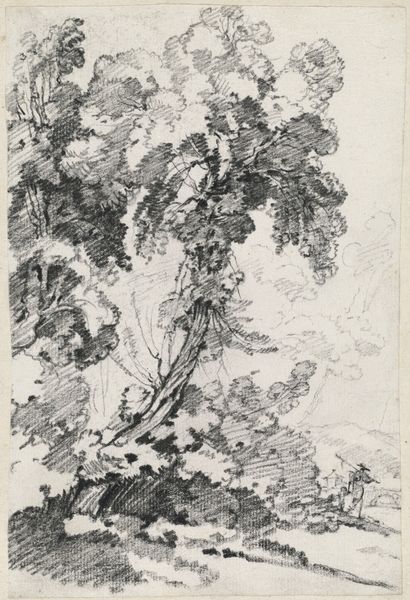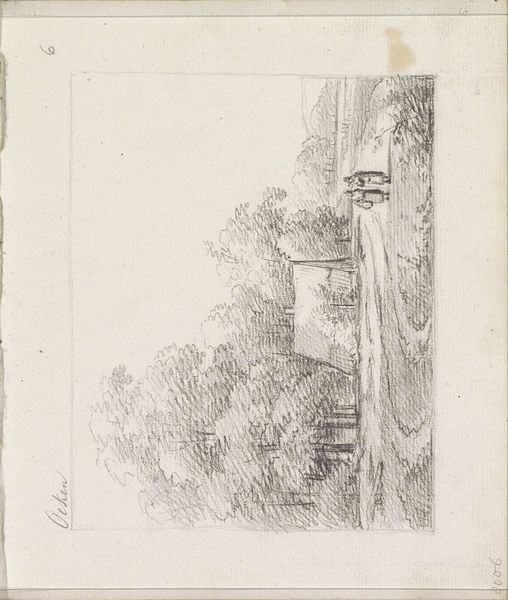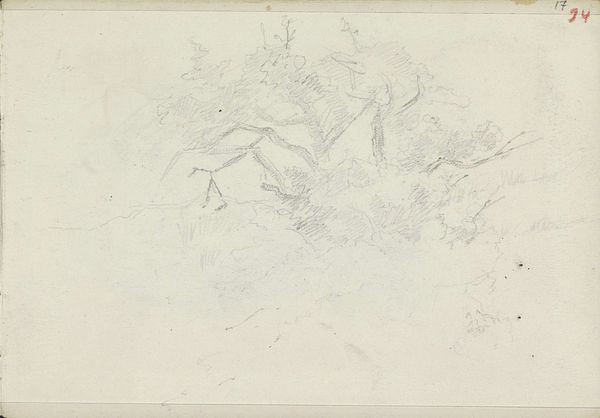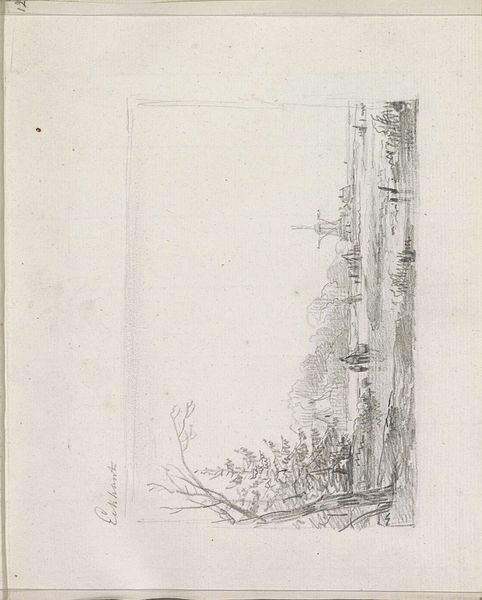
drawing, pencil
#
drawing
#
pencil sketch
#
landscape
#
romanticism
#
pencil
Copyright: Rijks Museum: Open Domain
Curator: Here we have a drawing titled "Boomrijk landschap met figuren bij een boerderij"—that's "Wooded Landscape with Figures near a Farmhouse"—by Andreas Schelfhout, dating from about 1825 to 1829. Editor: Immediately, I'm drawn to its fragility. It’s a delicate pencil sketch, the kind you almost have to squint at to see the fullness of its forms. Curator: Exactly. Schelfhout was a master of atmospheric landscapes. What seems simple on the surface actually holds quite sophisticated techniques in layering and hatching with the pencil. You feel like you could step right into this peaceful rural scene. Editor: I see a study in economy – making so much from seemingly little. What pencil did he use? I wonder about the paper, where it was sourced, who made it… it all fed into Schelfhout's practice. Curator: Well, considering the era, we're likely talking about fairly common materials available at the time. But what makes it art is the application—how Schelfhout captured the light filtering through the trees. Editor: Agreed. But I can't ignore the material realities—the human labor—inherent in the work's creation, however humble the materials might appear today. Pencil sketches are so often seen as mere precursors, preparations… Curator: True, but there's an immediacy, a directness of hand, that you sometimes lose in more finished works. He seemed intent on documenting reality without varnish. What mood does it stir in you? Editor: It brings to mind that liminal space between observation and art. It makes me want to wander, to escape. Curator: Ultimately, it is the quality of his line, the way he suggests rather than dictates, that gives this piece its enduring charm. Editor: It’s about connecting to labor, seeing that process, and maybe even acknowledging our collective past that it suggests: production, place and art all come together in something profound.
Comments
No comments
Be the first to comment and join the conversation on the ultimate creative platform.
